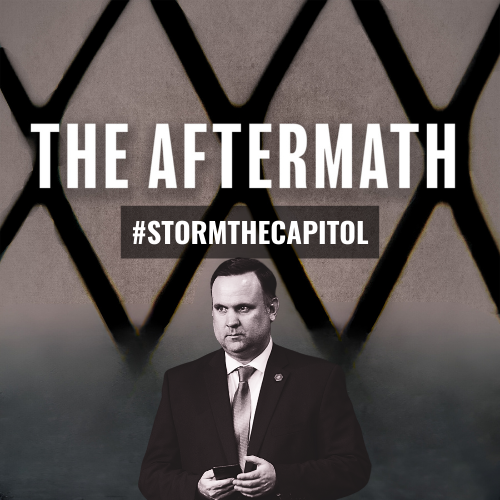The Aftermath: #StormTheCapitol
Episode 3 of The Aftermath looks at how Trump and his supporters used social media to orchestrate Jan. 6—and how social media companies failed to stop them.

Published by The Lawfare Institute
in Cooperation With

Today, we’re pleased to release Episode 3 of the second season of our narrative podcast series, The Aftermath, which examines the search for accountability for the Jan. 6 attack on the U.S. Capitol.
In Episode 1 of this season, we looked at the origins and legacy of The Big Lie—the claim that Donald Trump had won the 2020 presidential election. And we considered what has happened to one of its strongest advocates: Rudy Giuliani. Has he, and others like him, been held to account?
In Episode 2, we focused on the legal theory that inspired the insurrection and the lawyers—especially John Eastman—who promoted it. The theory engendered a scheme to pressure Vice President Mike Pence to intervene during the election certification process on Jan. 6 and assert authority to reject the votes. Pence refused to go along with the plan, even as rioters outside the Capitol were calling for his lynching. Has there been any accountability for architects of the legal strategy, like John Eastman, who spurred an insurrection?
In Episode 3, we examine a central but intangible cause behind the Jan. 6 insurrection: social media. It was, as we know, the primary means by which the Big Lie spread and took hold. And it was the main mechanism Trump had for communicating with the public.
Social media played a part in every aspect of Jan. 6. It was the reason claims of election fraud moved from online to on the ground—the reason the Big Lie morphed into #StopTheSteal. It was the reason armed Trump supporters organized and traveled to Washington, the reason the crowd became a mob, the reason many of them chanted “hang Mike Pence.” It was the reason they were riled up enough to invade the Capitol. And it was the reason, eventually, that they left.
Trump’s social media accounts had a heavy hand in all of it. But Trump himself wasn’t the only one behind the Trump online persona—he relied on a loyal aide by the name of Dan Scavino.
Scavino isn’t particularly well-known. But, as the Jan. 6 committee emphasized, he was in a position to know a great deal about whether Trump had known that violence was likely in the lead-up to Jan. 6, and about what was happening inside the White House that afternoon. Scavino defied his subpoena from the committee, and, even after he was referred to the Justice Department to be charged with contempt of Congress, he has not been prosecuted. Today, he remains by Trump’s side as he runs for reelection, reportedly continuing to craft Trump’s message online.
But there’s another reason social media was such a powerful instigator of Jan. 6.: the platforms themselves. As the Jan. 6 committee found, social media companies ignored warnings that their platforms were being used to organize and advocate potentially violent action. Even when they had the tools to intervene, they failed to do so. After Jan. 6, several of them finally took action to combat extremism and other abuses on their platforms—but eventually reversed course. And because both the Jan. 6 committee and Congress more broadly shied away from holding them accountable, not much has changed.
All of which leads to an uncomfortable question—if nothing has been done to fix what social media did to bring about Jan. 6, is 2024 destined to be a repeat of 2020?



.jpeg?sfvrsn=fa654ad6_3)



